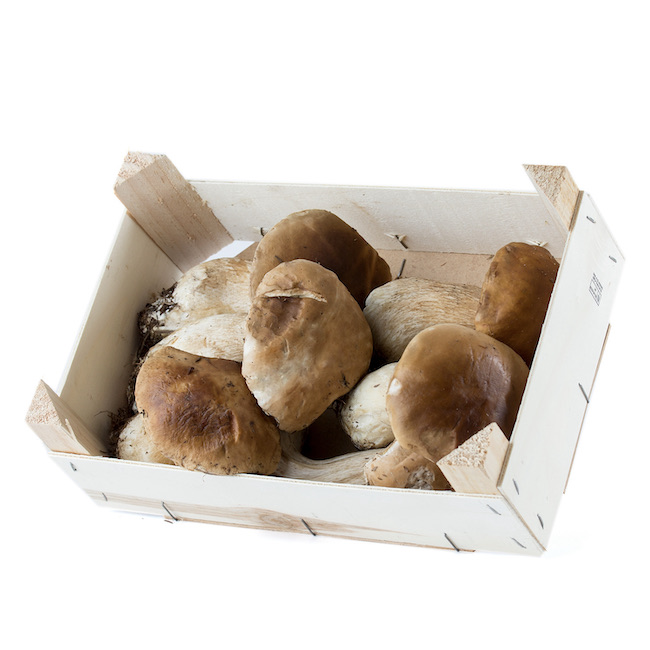.png.transform/rendition-xs/image_image%20(1).png)
All about Spanish Wild Mushrooms: Nutritious and Delicious!
'Setas' can be dried, canned and frozen so they become available to be enjoyed anywhere and anytime.
Breaded mushrooms with alioli, mushrooms stuffed with ham and cheese, sauteed spinach with mushrooms… These dishes would clearly be nothing without everyone’s favorite fungi. Setas are a staple in Spanish cuisine and a major part of the country’s gastronomy. Spain ranks third in the European Union in terms of production, which amounts to 120,000 tons on average per year, and wild mushrooms are a market with considerable scope for growth as consumption rises, both domestically and internationally. In fact, this market is expected to grow by 9.2% between 2016 and 2021.
Their popularity makes sense. From a nutritional standpoint, wild mushrooms contain carbohydrates, protein, and a good amount of fiber and, depending on the variety, they also contain iron, calcium, potassium, phosphorus, zinc, copper, riboflavin and niacin to a greater or lesser degree. They’re also a low-calorie vegetable that enhance satiety. Between these qualities and their versatility in the kitchen, it’s no wonder demand is growing.

An impressive range
Spain is home to an immense and impressive selection of mushrooms. From more common varieties like níscalos (bloody milk caps), trompetas de la muerte (death trumpets), and setas de primavera (Saint George’s mushrooms) to more exotic types, there are around 1,500 species of wild mushrooms currently recognized here.
The list of popular, mouthwatering mushroom tapas and dishes in Spain is about a mile long and includes everything from champiñones al ajillo (mushrooms sauteed with garlic and parsley) and boletus croquettes to scrambled eggs with wild mushrooms and mushrooms with Serrano ham.
Growing mushrooms
As mushrooms are delicate, they don’t grow just anywhere. There are two main areas in Spain where wild mushrooms are produced: Castile-La Mancha and also La Rioja, where it’s the second-most produced product after wine. These two regions account for 90% of Spain’s production.
For Spaniards, foraging for mushrooms in the fall is an extremely popular pastime, but mushroom lovers only have a small window to seek out their favorite treasures in local forests. As fresh wild mushrooms are seasonal and their useful life is short, producers and companies have developed several ways to preserve them so we can enjoy them all year round and export them to other countries.
The many formats of wild mushrooms
The most common preservation formats for mushrooms are drying, canning and freezing. One of the best ways for Spanish producers to preserve and export their wild mushrooms is by drying or dehydrating them. This technique offers several advantages: it helps preserve their nutritional value, it enhances and concentrates their flavor, and it extends their shelf life as they need not be refrigerated and can be consumed up to one year later if stored correctly. It’s also worth noting that dried wild mushrooms are less expensive than fresh ones and, when cooking, a smaller amount can be used compared with fresh mushrooms.
To eat dried mushrooms, they must first be soaked in water, broth or wine to rehydrate them and to clean and remove the tougher parts; then they’re ready to use. The most popular dried wild mushrooms in Spain include boletus edulis, níscalos, perretxicos, colmenillas, trompetas negras and amarillas, crimini, and shiitake.
Mushrooms can also be preserved in olive oil, in a mix of olive oil and vinegar, and in escabeche. In addition to the more traditional varieties, Spanish companies also offer products like yellowfoot, wax caps, and sooty heads.
Freezing is another method companies use to preserve and export their wild mushrooms. This approach can be used for a wide variety, including Caesar's mushroom, slippery jack, fairy ring mushrooms, king oysters and sheathed woodtufts.
Besides fresh, dehydrated, canned and frozen mushrooms, some companies offer more innovative products. That includes mushroom flour, olive oils and vinegars with mushrooms, liqueurs (e.g. vegan shiitake cream, boletus liqueur), marmalades and honey with mushrooms, and mushroom pate, among others.

Exporting Spain’s wealth of mushrooms
As Spain has the privilege of boasting such an extensive and delicious variety of mushrooms, it’s only right that local producers share them with the rest of the world. In 2019, Spain did just that, exporting $4.57 million worth of mushrooms. And this figure is expected to grow.
According to Pablo Martínez, the director of La Casa de Las Setas, until very recently Spain had been the company’s main market; however, they exported around 15% of production in 2021 to France, Italy, Germany, Belgium, the Netherlands, England and Portugal. This year, its efforts will be focused on further increasing its market share in those countries and on expanding its international footprint.

A world waiting to be discovered
Fernando Serra, head of fresh mushroom exports and the Barcelona branch of Laumont, believes in the potential of this market to grow in the future. “Consumers in Spain and around the world are increasingly familiar with wild mushroom varieties… Today, thanks to social awareness, commitments to live a healthy lifestyle, and easy access to information, people are more interested in mushrooms, especially since they are healthy, organic products from the forest with zero environmental impact and full of vitamins and other health benefits.”
Martínez agrees with the market’s future potential, noting that global consumers are only familiar with a small portion of the mushrooms available in Spain. With the right combination of marketing, awareness raising campaigns and patience, consumers at home and abroad will have the opportunity to try, and indubitably fall in love with, plenty of hitherto unknown mushrooms.
Author: Samara Kamenecka / @ICEX

